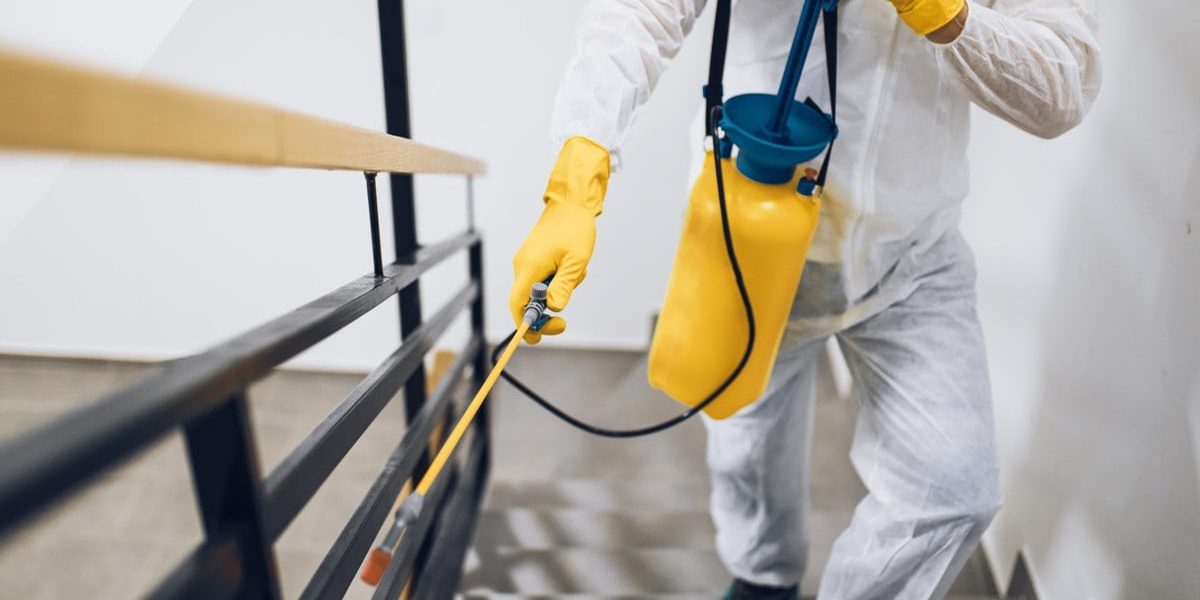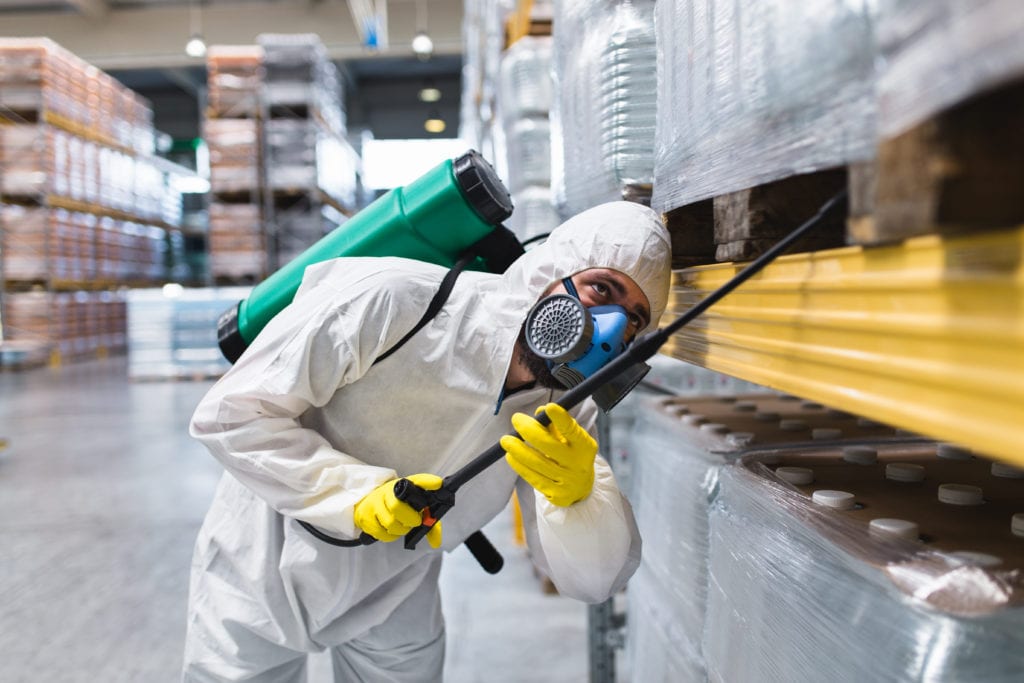Pest Control Visalia: Your Companion in Pest Management
Wiki Article
Kinds of Bug Control: Which Method Is Right for Your Problem?
When confronted with a parasite problem, the option of an appropriate approach for parasite control is critical in properly taking care of the scenario. From chemical therapies to organic remedies, there exists a variety of approaches that can be utilized to attend to different sorts of insects. Each method includes its own collection of benefits and factors to consider, making the decision-making process a nuanced one. Understanding the subtleties of each technique and assessing their compatibility with the particular pest problem handy is important for accomplishing lasting success in insect management. By exploring the numerous kinds of bug control methods readily available, individuals can make enlightened decisions customized to their distinct situations, guaranteeing a more efficient and lasting outcome in bug obliteration.

Chemical Parasite Control
Chemical pest control involves using synthetic or normally acquired chemicals to take care of and get rid of pest populaces efficiently. This technique is generally utilized in farming, forestry, and property settings to battle a wide variety of insects, consisting of bugs, rodents, and weeds. Using chemical pesticides can offer fast and targeted solutions to pest problems, making it a preferred option for lots of individuals and businesses.One of the essential advantages of chemical parasite control is its capability to quickly get rid of pests, reducing the danger of damage to plants, building, and human health and wellness - pest control visalia. By utilizing details chemicals that target certain parasites, this approach can effectively control infestations while minimizing injury to valuable organisms and the atmosphere when applied correctly
Nevertheless, the usage of chemical bug control also raises problems regarding prospective unfavorable results on non-target types, water sources, and human wellness. It is vital to follow safety and security guidelines, use chemicals properly, and consider alternative insect control methods to lessen these risks and make certain sustainable bug management methods.
Biological Parasite Control
Organic bug control, likewise known as biocontrol, makes use of living microorganisms to handle and decrease pest populaces normally. By utilizing the parasite's all-natural killers or virus, organic bug control supplies a sustainable and ecologically pleasant remedy to pest monitoring.One typical instance of biological insect control is making use of ladybugs to control aphid populations in yards. Ladybugs are natural predators of aphids and can help maintain their numbers in check without the usage of harmful chemicals. Similarly, the germs Bacillus thuringiensis (Bt) is used as an organic pesticide to control caterpillar insects while being safe for various other microorganisms.
Mechanical Parasite Control
Using hands-on and physical techniques to manage parasite populaces, mechanical pest control offers an alternative technique that does not rely upon using living microorganisms or synthetic chemicals. This approach includes using obstacles, traps, or various other tools to literally deter or get rid of insects. By obstructing insect entry points or establishing catches to catch them, mechanical pest control can properly decrease problems without presenting chemicals into the setting.One typical instance of mechanical insect control is using mesh displays on doors and home view website windows to avoid insects from getting in buildings. pest control visalia. This easy yet reliable technique serves as a physical barrier, maintaining parasites out while enabling appropriate ventilation. Furthermore, devices like mousetraps, fly swatters, and ultrasonic repellents drop under the mechanical pest control classification

Physical Pest Control
An efficient technique to handling pest populaces without depending on chemical or biological techniques involves the usage of physical insect control strategies. Physical bug control approaches aim to get rid of or discourage insects via mechanical methods rather than chemicals or chemicals. These techniques are frequently favored for their eco-friendly nature and minimal effect on non-target microorganisms.Some usual physical bug control approaches consist of using barriers such as webs or screens to avoid pest entrance, traps to capture and get rid of pests, and hand-picking to literally eliminate bugs from plants or structures. In addition, strategies like warm treatments can be utilized to regulate insects like bed bugs by increasing the temperature to degrees that are dangerous to the pests.
Physical bug control is particularly helpful in incorporated pest monitoring (IPM) approaches, where several insect control methods are combined for effective pest management while reducing using chemicals. By making use of physical insect control strategies, people can effectively address bug infestations with marginal ecological impact.
Integrated Pest Monitoring
When executing physical parasite control methods as part of bug monitoring strategies, Integrated Pest Management (IPM) arises as a detailed strategy that leverages numerous methods to successfully manage pest populations. IPM concentrates on long-lasting prevention of bugs via a combination of organic, social, physical, and chemical tools tailored to specific insect concerns. By incorporating multiple control tactics, IPM intends to reduce the risks related to insects while additionally decreasing dependence on chemical solutions.
Conclusion
To conclude, identifying the most efficient technique of bug control for your infestation depends on different variables such as the type of parasite, the degree of the infestation, and environmental factors to consider. Chemical insect control includes making use of pesticides, organic insect control makes use of all-natural killers, mechanical bug control entails physical barriers, physical pest control includes capturing or eliminating bugs, and incorporated insect monitoring incorporates multiple techniques for an all natural technique to pest control. Choose the method that ideal suits your certain situation.By making use of the parasite's natural predators or pathogens, biological pest control provides a lasting and environmentally pleasant remedy to pest administration.
Using physical and hand-operated methods Find Out More to take care of pest populations, mechanical parasite control offers a different approach that does not pop over to this site depend on the use of living organisms or synthetic chemicals.An effective approach to handling insect populaces without counting on chemical or organic techniques includes the usage of physical insect control techniques.When applying physical parasite control methods as part of parasite administration methods, Integrated Parasite Administration (IPM) arises as a thorough approach that leverages numerous strategies to properly regulate pest populations. Chemical insect control involves the use of chemicals, biological parasite control makes use of all-natural predators, mechanical insect control includes physical obstacles, physical parasite control includes capturing or getting rid of bugs, and integrated bug monitoring incorporates multiple techniques for a holistic method to pest control.
Report this wiki page